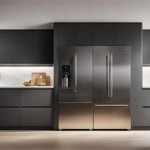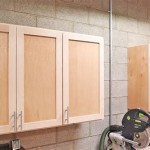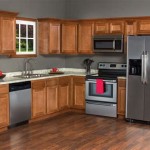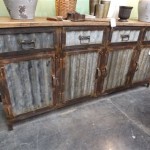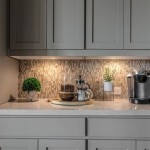Making Curtains for Kitchen Cabinets: A Comprehensive Guide
Kitchen cabinet curtains offer an alternative to traditional cabinet doors, providing a softer, more personalized aesthetic to a kitchen space. They can be a budget-friendly option for updating the look of cabinets, particularly in older homes or rental properties where permanent renovations are not feasible. This article provides a detailed guide on creating and installing kitchen cabinet curtains, covering material selection, measurement techniques, construction methods, and hanging options.
Choosing the Right Fabric and Materials
The selection of fabric is paramount to the overall success and aesthetic of kitchen cabinet curtains. Several factors should be considered when making this choice, including durability, ease of cleaning, light filtration, and desired style.
Cotton is a popular choice due to its affordability, versatility, and availability in a wide range of prints and colors. Cotton fabrics are relatively easy to sew and maintain, but they may be prone to shrinking and fading. Pre-washing cotton before cutting and sewing is crucial to minimize shrinkage after installation.
Linen is another natural fiber option that offers a more textured and sophisticated look. Linen is durable and breathable, making it a good choice for kitchens. However, linen wrinkles easily and may require more frequent ironing. A linen blend, incorporating cotton or synthetic fibers, can reduce wrinkling and improve ease of care.
Synthetic fabrics, such as polyester and acrylic, are known for their durability, wrinkle resistance, and colorfastness. These fabrics are often less expensive than natural fibers and are available in a variety of textures and patterns. Synthetic fabrics can be a practical choice for kitchens with high traffic or where spills are common.
Fabric weight is also an important consideration. Lightweight fabrics, such as voile or sheers, allow more light to pass through but offer less privacy. Medium-weight fabrics, such as cotton or linen blends, provide a balance of light filtration and privacy. Heavyweight fabrics, such as denim or canvas, offer the most privacy and can help to block sunlight, but may appear too bulky for some kitchen cabinet applications.
In addition to fabric, other essential materials include thread, measuring tape, scissors, pins, a sewing machine, an iron, and a pressing cloth. The thread should be chosen to match the fabric color and weight. High-quality thread will help ensure that the seams are strong and durable. Accurate measuring tools are crucial for creating curtains that fit properly and hang evenly. A sharp pair of scissors is essential for clean and precise fabric cutting. Pins are used to hold fabric pieces together before sewing, and a sewing machine is necessary for creating strong and professional-looking seams. An iron and pressing cloth are used to press seams and hems flat, which gives the curtains a polished appearance.
Accurate Measurement and Cutting Techniques
Precise measurements are essential for ensuring that the kitchen cabinet curtains fit properly and hang correctly. Inaccurate measurements can result in curtains that are too short, too long, or uneven. The following steps outline the process for accurately measuring and cutting fabric for kitchen cabinet curtains.
First, measure the width of the cabinet opening. Add several inches to this measurement to allow for fullness or gathering. The amount of added width depends on the desired look; generally, adding 1.5 to 2 times the width of the cabinet opening will create a soft, gathered effect. This measurement determines the total width of the fabric panel needed.
Next, measure the height of the cabinet opening. Add several inches to this measurement for the top and bottom hems. The length of the hems will depend on the chosen hanging method. For a rod pocket, add enough length for the pocket plus an allowance for the heading (the fabric above the rod pocket). For other hanging methods, such as clip-on rings or hook-and-loop tape, adjust the hem length accordingly. Typically, a 2-3 inch hem is sufficient for most applications.
Once the measurements are determined, carefully transfer them to the fabric using a measuring tape and chalk or a fabric marker. Use a straight edge to ensure that the lines are accurate and straight. Before cutting, double-check the measurements to avoid mistakes.
When cutting the fabric, use sharp scissors or a rotary cutter and cutting mat. Cut along the marked lines, taking care to keep the fabric flat and even. It is often helpful to use fabric weights or pins to secure the fabric in place while cutting. After cutting, press the fabric with an iron to remove any wrinkles and to prepare it for sewing.
To ensure accurate and consistent cutting, consider creating a pattern piece out of paper or cardboard. This pattern piece can be used as a template to cut multiple fabric panels, ensuring that they are all the same size and shape. This is particularly useful when making curtains for multiple cabinets.
Construction Methods and Sewing Techniques
The construction of kitchen cabinet curtains involves several basic sewing techniques, including creating seams, hems, and rod pockets. A solid understanding of these techniques will ensure that the curtains are durable and aesthetically pleasing.
First, finish the raw edges of the fabric panels to prevent fraying. This can be done using a serger, a zigzag stitch on a sewing machine, or by folding the edges over twice and pressing them. A serger provides the most professional-looking finish, but a zigzag stitch is a perfectly acceptable alternative for home sewing projects.
Next, create the side seams. Fold the side edges of the fabric panels over twice, press them with an iron, and then stitch them in place using a straight stitch. The width of the side seams will depend on the desired look, but a 1/2-inch to 1-inch seam is generally sufficient. Be sure to backstitch at the beginning and end of each seam to secure the stitches.
To create the bottom hem, fold the bottom edge of the fabric panel over twice, press it with an iron, and then stitch it in place using a straight stitch. The width of the bottom hem will depend on the desired look, but a 2-3 inch hem is typical. A wider hem can add weight to the bottom of the curtain, helping it to hang straight.
For a rod pocket, fold the top edge of the fabric panel over twice, press it with an iron, and then stitch it in place using a straight stitch. The width of the rod pocket should be slightly larger than the diameter of the curtain rod to allow the curtain to slide easily. Leave the top edge of the fold unstitched to create the pocket. The distance between the stitched line and the top edge of the fabric will determine the heading of the curtain. A heading is the portion of fabric that extends above the rod pocket, creating a decorative ruffle or pleat.
Alternatively, for a simpler hanging method, consider using clip-on rings or hook-and-loop tape. Clip-on rings attach directly to the top edge of the curtain and slide onto the curtain rod. Hook-and-loop tape can be used to attach the curtain to a strip of hook-and-loop tape that is mounted inside the cabinet. This method is particularly useful for cabinets with limited space or where a traditional curtain rod is not practical.
Hanging Options and Installation
The final step in making kitchen cabinet curtains is choosing a hanging method and installing the curtains. Several options are available, each with its own advantages and disadvantages.
A traditional curtain rod is a common and versatile option. Curtain rods are available in a variety of styles, materials, and sizes, making it easy to find one that complements the kitchen décor. Curtain rods can be mounted inside the cabinet opening using brackets or tension rods. Brackets provide a more secure and permanent mounting solution, while tension rods are easier to install and remove. When using brackets, be sure to choose brackets that are appropriate for the weight of the curtains. Tension rods are best suited for lightweight curtains.
Cafe rods are smaller and more decorative than traditional curtain rods. They are typically used for curtains that cover only the lower portion of a window or cabinet opening. Cafe rods can be mounted using brackets or tension rods, similar to traditional curtain rods.
Spring tension rods offer a tool-free installation option. These rods are designed to fit snugly inside the cabinet opening and are held in place by spring tension. Spring tension rods are easy to install and remove, making them a good choice for renters or those who want a temporary solution. However, they may not be suitable for heavier curtains.
Self-adhesive hook-and-loop tape provides a simple and non-invasive hanging method. One strip of hook-and-loop tape is attached to the inside of the cabinet, and the other strip is attached to the top edge of the curtain. This method is easy to install and remove, and it does not require any drilling or hardware. However, it may not be suitable for heavier curtains or for cabinets with uneven surfaces.
Regardless of the chosen hanging method, it is important to ensure that the curtains are hung evenly and straight. Use a level to ensure that the rod or tape is aligned properly. Adjust the curtains as needed to achieve the desired look. Once the curtains are installed, step back and admire the transformation they have made to the kitchen space.

How To Make A Curtain For Your Kitchen Cabinet The Otto House

A Temporary But Very Cute And Easy Skirted Cabinet In The Kitchen Chris Loves Julia

How To Make A Curtain For Your Kitchen Cabinet The Otto House

Diy Cabinet Curtains A Wonderful Thought

How To Make A Curtain For Your Kitchen Cabinet The Otto House

All Around Fabric Cabinets On Curtain Tracks Matchness Com Best Kitchen French Country Kitchens

Diy Side Light Curtains Home

Diy Cabinet Curtains Sew Or No Blake Hill House
How To Make A Curtain For Your Kitchen Cabinet The Otto House

Easy Breezy New Cabinet Curtains Kitchen Ideas
Related Posts

